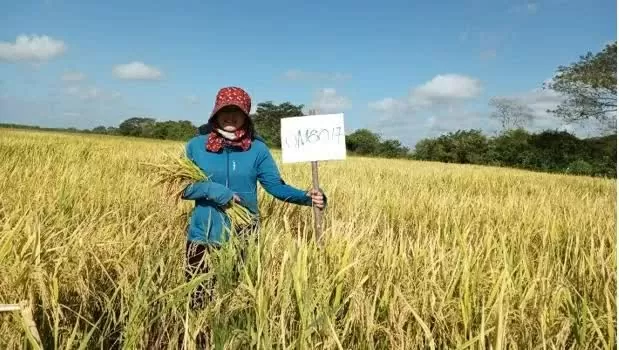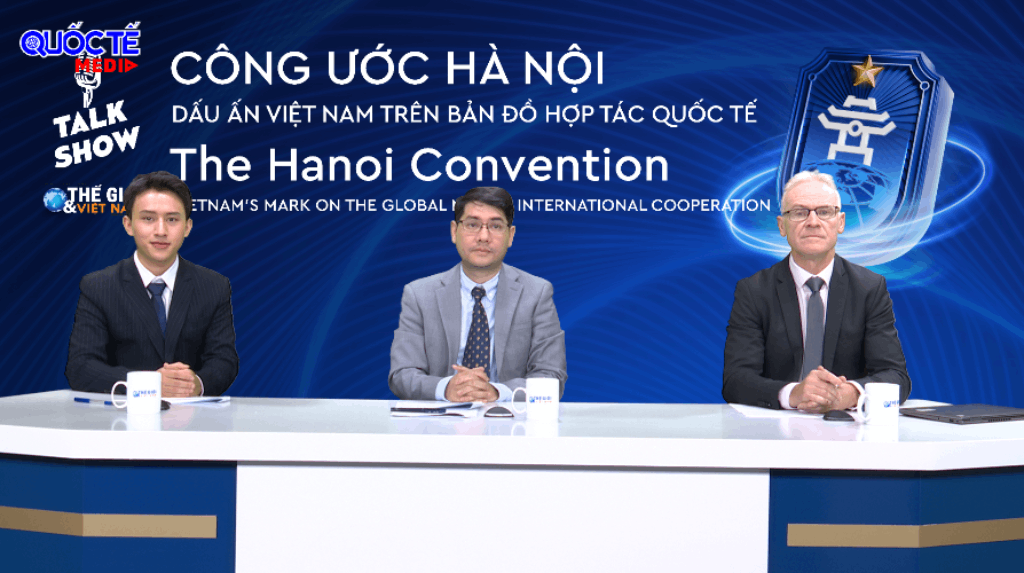
Vietnamese experts bring to Cuba not only seeds, but also their hearts in a rice production project
Latest
 |
| Agricultural expert Tran Thi Tham stands joyfully beside a Vietnamese rice field on Cuba's soil. (Source: VNA) |
Amid the vast golden rice fields of Sancti Spiritus Province, Ms. Tran Thi Tham was overwhelmed with emotion as she looked at the heavy, grain-filled rice panicles— the result of months working side by side with Cuban farmers to overcome countless challenges.
"When I saw the fields of ripened rice, heavy with grain, looking like paintings and yielding far better than in previous seasons, I knew I had accomplished something truly meaningful," Tham shared.
Tran Thi Tham was one of the experts participating in the Vietnam-Cuba cooperation project on rice production during the final year of Phase 5. She was entrusted with many important tasks, including advising and guiding Cuban researchers and agricultural extension officers on plant breeding, seed production and purification, experimental design for optimizing rice cultivation processes, developing training materials, teaching, and building intensive rice farming models. She said she clearly understood her responsibilities and approached her mission with unwavering determination.
Speaking about her connection to Cuba, Tham said: "I never imagined I would set foot in Cuba, though the country has always held a place in my heart through literature and poetry since childhood. Learning that our distant brother nation was facing immense hardships, especially severe food shortages, I wanted to contribute, drawing from my 15 years of experience at the North Central Vietnam Agricultural Science Institute."
In November 2024, a team of 15 Vietnamese experts landed in Havana after a 30-hour journey.
"Stepping off the plane, the airport was dim due to a power outage. Immigration procedures were carried out under flashlight and dim emergency lights. Right then, I realized just how difficult things were for our friends," Tham recalled.
Yet material hardships could not overshadow the warmth of human bonds. The team was welcomed by the Cuban project management board with warm hugs and affectionate smiles. Though strangers at first, it felt as if they had known each other for years. For Tham, these heartfelt gestures became a source of strength as she adjusted to her new environment.
Assigned to Sancti Spiritus and in charge of three central provinces in Cuba, Tham soon came to understand the severe challenges faced by the Caribbean island’s agricultural sector. Vast, flat fields lay abandoned due to shortages of fuel, supplies, and electricity for irrigation. Marabu forests encroached on farmland, their thorns drawing blood from passersby. Blackouts lasted 15 to 20 hours a day. Rice fields were densely sown, sparsely flowering, overrun with weeds. Ripe rice stood dry and unharvested, again due to fuel shortages that grounded machinery.
Despite the obstacles, Cuba offered certain advantages—its climate was mild and fresh, with brilliant but not harsh sunlight. Winters were not cold. However, as an island nation, the sea breeze brought a salty tang and left the skin dry and rough.
“The soil here is quite fertile, ideal for crop growth,” Tham observed, “but when it rains, it sticks to shoes and wheels, making it nearly impossible to move. We often joked, ‘the soil loves people too much.’”
According to Nguyen Chi Vuong, Head of the Vietnamese expert team in Sancti Spiritus, outdated farming practices were a key factor limiting rice productivity. Local farmers often sowed dry seeds directly into flooded fields, resulting in poor germination and the need for excessive seed quantities—up to 171 kg/ha—leading to significant waste.
Additionally, most of Cuba’s rice-growing land is light clay without a plow pan, which causes nutrients to leach away easily. Fields were laid out in large plots—some hundreds of hectares in size—yet irrigation water often overflowed from one field to another, causing erosion and fertilizer loss. Moreover, without fixed field borders, farmers had to rebuild them after every season.
Faced with these realities, the Vietnamese experts patiently introduced several improvements. Tham shared:
“We trained Cuban farmers to change their habits: soaking and germinating seeds before sowing them in moist fields, reducing seed usage to 100–120 kg/ha.”
The experts guided every step—from removing unviable seeds to checking germination rates and assessing seed quality. Vuong added:
“We instructed them to subdivide large fields and build fixed borders at proper elevations to retain water. For land preparation, we designed additional leveling bars to flatten fields before sowing.”
Still, not everything went smoothly. Tham recalled a memorable experience:
“One time, the seeds had sprouted perfectly, ready for aerial sowing. But we lacked fuel, so the planes couldn’t fly. We had to mobilize workers and farmers to manually scatter the seeds, which was extremely labour-intensive.”
It was a hard-earned lesson in adaptability in Cuba’s real-world conditions.
The results came after five months of dedication. Tham recounted emotionally:
“Rice models using Vietnamese techniques gradually took shape and developed well. Smiles bloomed as we watched the lush green fields day by day. And the joy was overwhelming when the harvest exceeded expectations.”
Despite the language barrier, the bond between Vietnamese experts and Cuban colleagues grew stronger. Vuong noted:
“Language was never a true obstacle—we had interpreters, and beyond that, we used gestures, slang, and smiles. We joked that it was 'body language.'"
Tham added: “Cuban people are incredibly friendly, sociable, and warm. And when they found out we were Vietnamese, their affection grew even more. It felt like we had known each other forever. During my time in Cuba, I deeply felt the people’s sincerity. They placed great trust in us and treated us with special warmth.”
Beyond the impressive yields, the project’s most meaningful legacy may lie in the heartfelt handshakes between Cuban farmers and Vietnamese experts amid golden fields. As Pham Van Thuan, Head of the Vietnamese rice expert delegation, said:
“We didn’t just bring seeds to Cuba—we brought our hearts. The greatest success is seeing the farmers confidently apply new techniques, so that one day soon, Cuba can achieve food self-sufficiency.”
The journey of the Vietnamese experts in Cuba not only brought forth bountiful rice fields, but also continued the story of friendship between the two nations, affirming the role of Vietnamese agriculture in supporting other countries in developing food production.
















